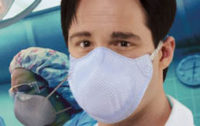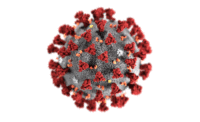The Centers for Disease Control and Prevention on Friday, January 14, 2022 updated its guidance on masks for the general public, now saying that people "may choose" to wear N95 and KN95 masks because they offer the best protection against Covid-19.
The agency says that the "CDC continues to recommend that you wear the most protective mask you can that fits well and that you will wear consistently."
Previously, the CDC did not recommend that the general population wear N95 masks or KN95s, a similar type of mask made in China, fearing that a run on those higher-quality masks would impact the supply in health care settings. The CDC now says shortages are no longer a concern.
"When worn consistently and properly," the agency wrote on its website, N95 respirators approved by the National Institute for Occupational Safety and Health, or NIOSH, "provide the highest level of protection from particles, including the virus that causes Covid-19."
Summary of recent changes
- Added information to present similar content for masks and respirators
- Clarified that people can choose respirators such as N95s and KN95s, including removing concerns related to supply shortages for N95s
- Clarified that “surgical N95s” are a specific type of respirator that should be reserved for healthcare settings
- Clarified that some types of masks and respirators provide more protection to the wearer than others
Key messages
- Masking is a critical public health tool for preventing spread of COVID-19, and it is important to remember that any mask is better than no mask.
- To protect yourself and others from COVID-19, CDC continues to recommend that you wear the most protective mask you can that fits well and that you will wear consistently.
- Masks and respirators are effective at reducing transmission of SARS-CoV-2, the virus that causes COVID-19, when worn consistently and correctly.
- Some masks and respirators offer higher levels of protection than others, and some may be harder to tolerate or wear consistently than others. It is most important to wear a well-fitted mask or respirator correctly that is comfortable for you and that provides good protection.
- While all masks and respirators provide some level of protection, properly fitted respirators provide the highest level of protection. Wearing a highly protective mask or respirator may be most important for certain higher risk situations, or by some people at increased risk for severe disease.
- CDC’s mask recommendations provide information that people can use to improve how well their masks protect them.
Choosing a mask or respirator for different situations
Masks and respirators (i.e., specialized filtering masks such as “N95s”) can provide different levels of protection depending on the type of mask and how they are used. Loosely woven cloth products provide the least protection, layered finely woven products offer more protection, well-fitting disposable surgical masks and KN95s offer even more protection, and well-fitting NIOSH-approved respirators (including N95s) offer the highest level of protection.
Whatever product you choose, it should provide a good fit (i.e., fitting closely on the face without any gaps along the edges or around the nose) and be comfortable enough when worn properly (covering your nose and mouth) so that you can keep it on when you need to. Learn how to improve how well your mask protects you by visiting CDC’s Improve How Your Mask Protects You page.
A respirator has better filtration, and if worn properly the whole time it is in use, can provide a higher level of protection than a cloth or procedural mask. A mask or respirator will be less effective if it fits poorly or if you wear it improperly or take it off frequently. A respirator may be considered in certain situations and by certain people when greater protection is needed or desired.
- When caring for someone who is sick with COVID-19.
- If you are at increased risk for severe illness, for example, people who are immunocompromised, older adults, and people with certain underlying medical conditions.
- When working at a job where you interact with large numbers of the public, especially when not everyone is consistently wearing a mask. For example, bus drivers and grocery store workers.
- When riding on planes, buses, trains, or other forms of public transportation*, especially if it is for a long period of time on crowded conveyances.
- When physical distancing is not possible or when you are in crowded indoor or outdoor public settings.
- If you are not up to date on COVID-19 vaccinations.






